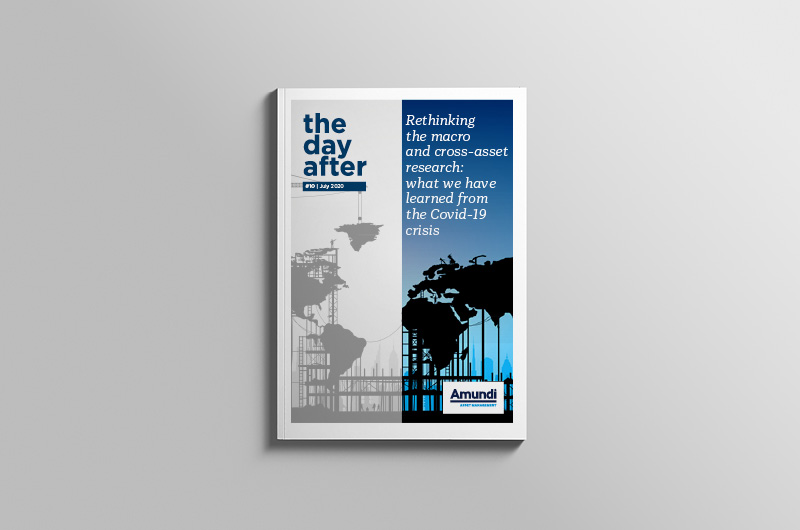Wild swings, but bitcoin proves its digital mettle
Like most assets, bitcoin cruised into the new year in 2020, racking up a 44% rise until mid-February.
Then, like the stock market, BTC took fright at the extent of the global disaster that Covid-19 rapidly proved to become.
But while the S&P 500 index plunged by 33.7% before a floor was (at least temporarily) established, BTC went further, more than halving in price (down 53.2%).
For an asset that hangs its hat on non-correlation to the traded markets, it was an alarming fall.
However, since that March stabilisation, where the S&P 500 has rebounded by 28.3%, Bitcoin has streeted Wall Street in recovery terms, rocketing by 83%, to US$8,892.70.
Henrik Andersson, chief investment officer at Melbourne-based crypto asset investment firm Apollo Capital, is not surprised by the resurgence of the cryptocurrency heavyweight, saying that several major factors are in bitcoin’s favour.
“The first is that central banks around the world are printing an increasing amount of money, as they have to do given the wide-reaching macro-economic impacts of the Covid-19 pandemic,” Andersson says.
“That is not a new story, but no-one imagined the pandemic, and certainly no-one imagined the Federal Reserve enacting ‘QE Infinity’ – (Fed chairman Jerome) Powell has signalled that the Fed will literally throw everything it can into efforts to turn around the slump in the world’s largest economy and prevent a global credit crunch. No-one imagined the Fed committing to unlimited quantitative easing, by buying not only Treasuries and municipal bonds, but mortgage-backed securities and even corporate bonds.”
While that is arguably what the Fed has to do to prevent economic meltdown in the US, it is bad news for “fiat” money like the US dollar: the monetary base has to expand to previously unimaginable amounts, devaluing currency.
“Real” stores of money – as gold is traditionally seen to be – are benefiting. “And so will ‘digital gold,’ which bitcoin is,” says Andersson.
The other main fundamental factor is the “halvening” that occurred this week: this event means that the supply of new bitcoins drops in half, from 12.5 bitcoins per new block to just 6.25.
This is the third “halvening” of bitcoin: the process, which was written-into the software protocol of bitcoin as the digital currency was being created 11 years ago, by a person, or persons, identifying themselves as “Satoshi Nakamoto.” The halvenings regularly (roughly every four years) constrict supply of the digital asset: no more bitcoins will be created after the total number of bitcoin in existence hits 21 million.
Whoever “Satoshi Nakamoto” is, he, she, it or they had their now-traditional fun with this week’s halvening. At 5.23 am on Tuesday morning, block number 630,000 was “mined.” With it, the supply decreased from 12.5 bitcoins to 6.25 bitcoin per block. The last block in the precious epoch, block number 629,999 contained a message:
“NYTimes 09/Apr/2020 With $2.3T Injection, Fed’s Plan Far Exceeds 2008 Rescue”
This echoes “Satoshi’s” message from the bitcoin genesis block in 2009, that read:
“The Times 03/Jan/2009 Chancellor on brink of second bailout for banks”
The crucial point to appreciate, says Andersson, is that with 87.5% of all Bitcoin now mined, it is becoming scarcer. He says this is in stark contrast to US M1 and M2. which are now growing on a three-month annualised basis at 73% and 39% respectively, the fastest rates since records began.
“While quantitative easing goes nuts, bitcoin in contrast is going through a ‘quantitative hardening,’ bringing its inflation down to around 1.8%,” says Andersson. “Because of this, an increasing number of major global investors are seeing bitcoin as digital gold, and as a hedge against reckless monetary policy by central banks.”
This process has been “helped along,” he says, by legendary hedge-fund investor Paul Tudor Jones, who revealed in a paper this month that he was buying bitcoin, to the extent of 1%-2% of his portfolio.
That is the kind of allocation, Andersson says, about which an increasing number of financial advisers are talking to him. “Up until now, most of the investors we have had have been family-office and high-net-worth clients. But many mainstream advisers are now investigating holding a bitcoin allocation as a part of a diversified portfolio, as an uncorrelated asset.”
Andersson says the correlation that bitcoin showed in the Covid-19 Crash is “well understood.”
“It’s reasonably well-understood that there was a lot of leverage in the crypto markets, and a lot of that selling was tied to margin calls on other assets. Gold fell, too: in mid-March, the correlation of all assets came together, but that was really due to an unprecedented external factor – the pandemic and the associated economic hit – and that extreme event made all assets more correlated for some time,” he says.
“Gold’s correlation to equities rose sharply, as well. You really could not hide anywhere. BTC is typically negatively correlated to the S&P 500, but did shoot up to 0.6 during the Crash – it is still at about 0.5%, but we expect that to come back down as we go forward.”
With a year-to-date performance of +24.6%, compared to +12.5% for US$ Gold and -11.2% for the S&P 500 Index, he says bitcoin is back doing what it is supposed to do.
“Bitcoin is the best-performing asset class at the moment. It’s really tremendous to see such a renowned investor as Paul Tudor Jones saying that he is allocating up to 2% of his portfolio to Bitcoin, because it has such strong upside. Everyone understands that it is a super-volatile asset but it is starting to make sense for advisers to have a small allocation to crypto in a diversified portfolio.” Andersson says. “The narrative of Bitcoin being the digital equivalent of gold, and becoming a genuine member of the liquid alternatives asset class, is getting stronger.”









